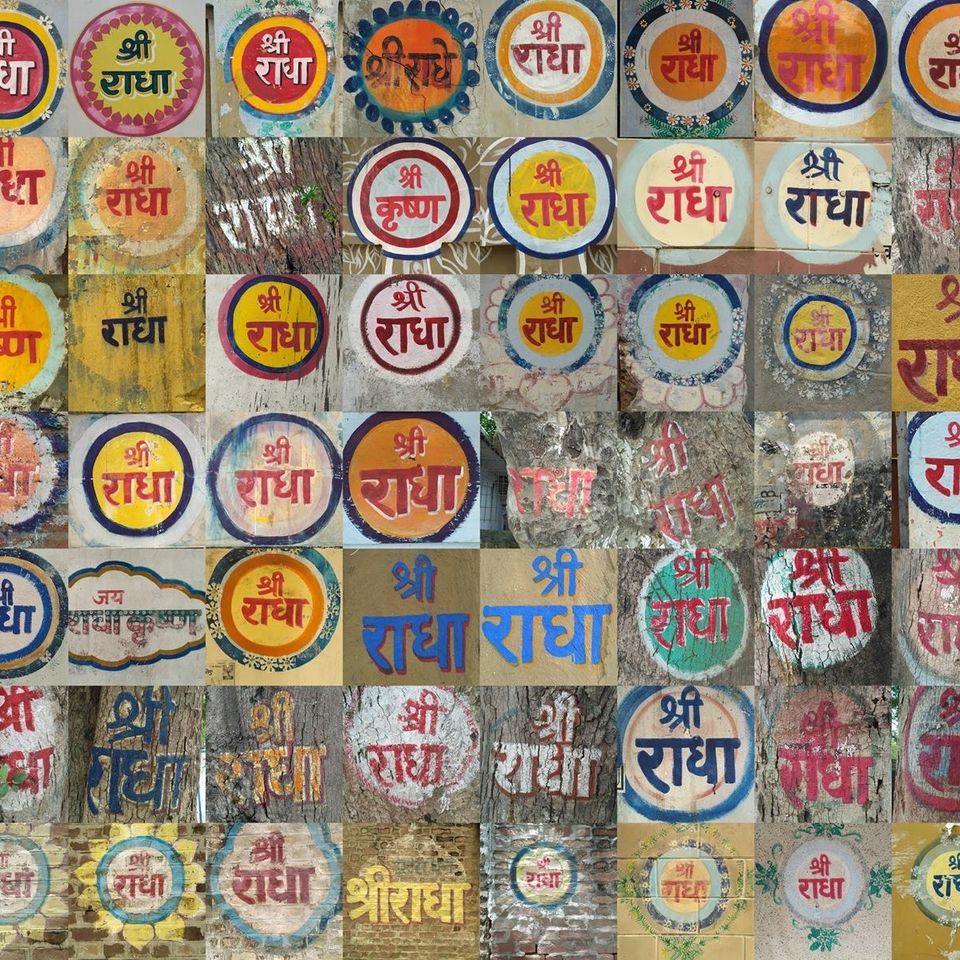Sthāyi-bhāva vibhāva anubhāva sāttvika sañcāri
Sthāyi-bhāva vibhāva anubhāva sāttvika sañcāri
Sthāyi-bhāva स्थायि भाव:
When the causes, effects and concomitant factors that contribute to the Lord's relishing of his loving affairs with his devotees are expressed in poetic or dramatic form, they act upon the subconscious makeup of a sympathetic audience of devotees, influencing them to experience different moods, feelings and ecstasies. These different elements are referred to by terms coming from the technical language of æsthetics; they are known as vibhāvas, anubhāvas, sāttvika-bhāvas and sañcāri-bhāvas.
Rūpa-bābājī defines sthāyi-bhāva in the following manner:
aviruddhān viruddhāṁś ca bhāvān yo vaśatāṁ nayet |
surājeva virājeta sa sthāyī bhāva ucyate || BRS 2.5.1.
That emotion or mood which dominates over all others, whether they are favorable or antagonistic to it, and lords over them like a strong king, is called the dominant emotion or sthāyi-bhāva.
In traditional Sanskrit drama, the subject and object of love can be either male or female. Indeed, as one character expresses love for the other, he takes on the role of subject while the other is the object of that love. In the devotional context, the same is to a certain extent true, particularly where Rūpa-bābājī's dramas are concerned: Kṛṣṇa's emotional involvement is an important aspect of the drama in both Lalita-mādhava and Vidagdha-mādhava. However, from a devotional point of view, the devotee is strictly speaking the repository or subject of love (āśraya) for Kṛṣṇa, who is the object of that love.
Vibhāva विभाव
The media through which emotion arises are called vibhāva. There are two categories of vibhāva:
(1) the personalities or lovers experiencing the original emotion, who are called the आलम्बन ālambana or props, and
(2) the circumstantial inspirations for the emotion, such as the setting, the season and its symptoms, or reminders of past emotions, etc., which are known as the उद्दीपन uddīpana. The personalities are also divided into two according to the role they play: the one experiencing the dominant emotion has been given the name of āśraya-vibhāva, or repository of love; the other is the object (viṣaya) of the emotion, the one who inspires love in the āśraya.
Anubhāva und Sāttvikabhāva आनुभाव च सात्त्विकभाव
The uddīpanas or kindlers of
rapture awaken the dominant mood, which then manifests itself externally
in certain physical responses; these manifestations
are called
anubhāvas if they are done somewhat consciously or willingly (like the coquettish movements
of a woman who is attracted to her man), and
sāttvikas if they are spontaneous or uncontrollable (like tears
or hair standing on end).
Sañcārī सञ्चारी
Sañcārī ("concomitant feelings") are the passing emotions, like excitement or frustration, which appear in the lovers in particular situations. They arise from the dominant mood and give it beauty and variety, like waves in the ocean. All the different ingredients combine together to produce the full esthetic experience known as rasa.
vibhāvair anubhāvaiś ca sāttvikair vyabhicāribhiḥ
svādyatvaṁ hṛdi bhaktānām ānītā śravaṇādibhiḥ |
eṣā kṛṣṇa-ratiḥ sthāyī bhāvo bhakti-raso bhavet || BRS 2.1.5.
Devotional rapture, or bhakti-rasa, takes place when the dominant mood of love for Kṛṣṇa, being nourished by a feeling of wonder, is relished in the heart of a devotee along with the different vibhāvas, anubhāvas, sāttvikas and vyabhicāris, through the devotional processes of hearing about Kṛṣṇa's form, qualities and activities, etc.
ei sab kṛṣna-bhakti-rasa sthāyi-bhāva |
sthāyi-bhāve mile yadi vibhāva anubhāv ||
sāttvika vyabhicārī bhāver milane |
Kṛṣṇa-bhakti rasa hay amṛta āsvādane ||
yaiche dadhi sitā ghṛta marica karpūr |
milane rasālā hay amṛta madhur || CC
2.19.180-2.
The different identities of relationship with Kṛṣṇa are called sthāyi-bhāvas, or dominant moods. When one of these is mixed with the four ingredients known as vibhāvas, anubhāvas, sāttvikas and vyabhicāris, the sweet taste of sacred rapture can be had, just as when, in a given recipe, the main ingredient when combined with other spices and condiments takes on a unique flavour. Rūpa himself gives the example of yogurt, which when mixed with sugar, butter, pepper, and camphor becomes the delicious concoction known as rasāla.

